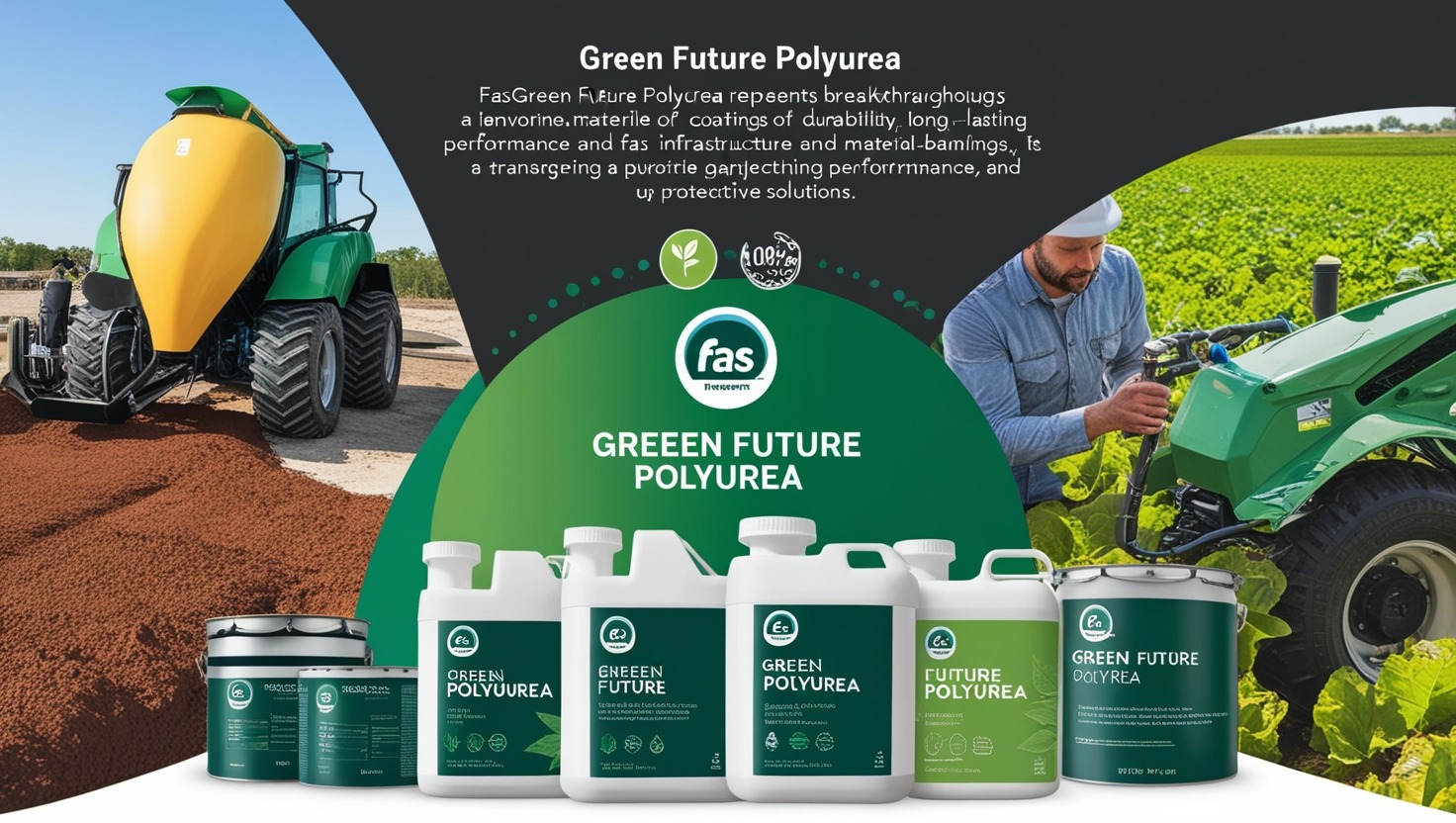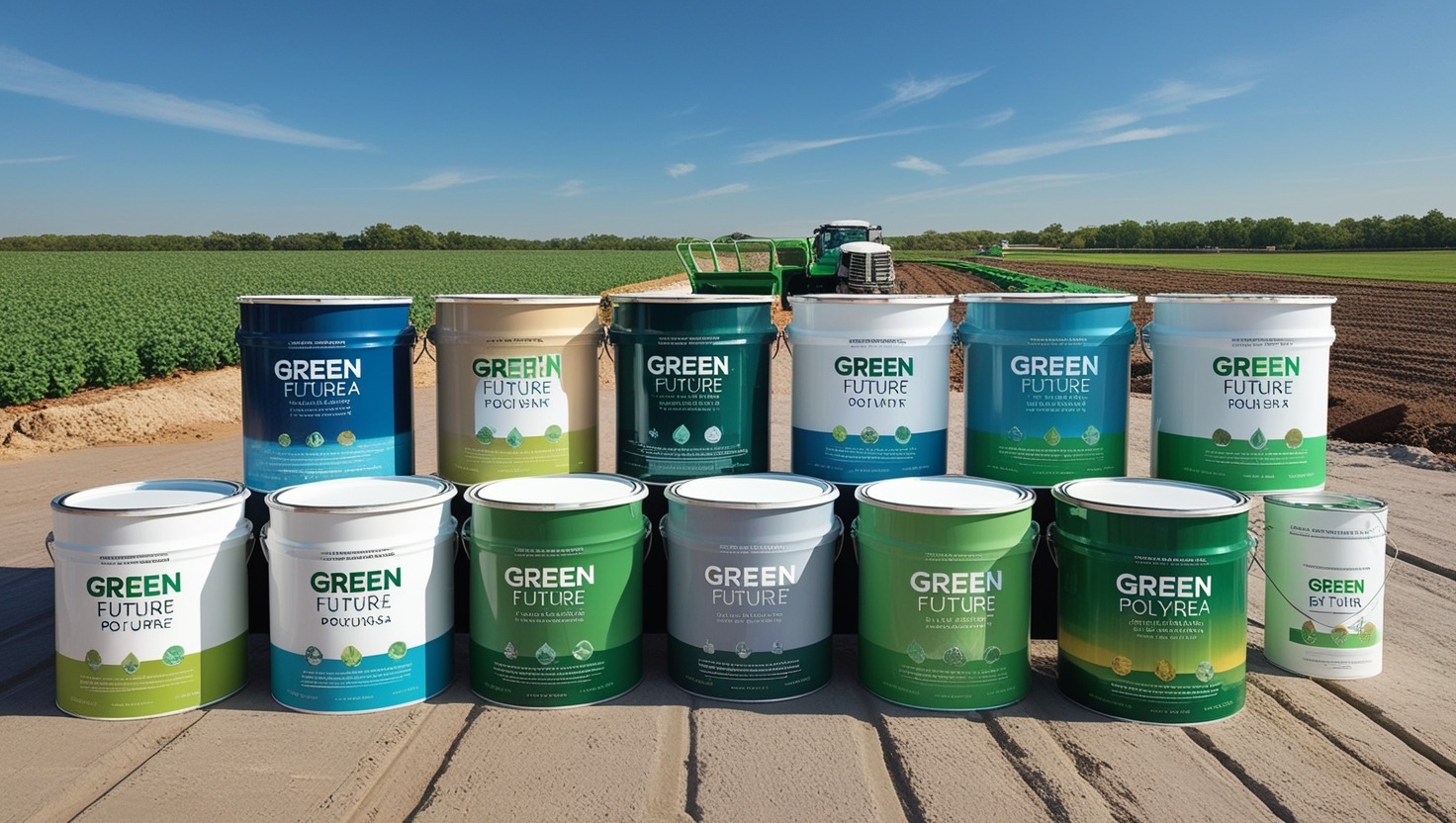Blogs&Articles
Green Future Polyurea a Sustainable Coating Revolution
Published
10 months agoon
By
Amolia
Green Future Polyurea represents a breakthrough in the field of coatings and protective solutions. With its versatile applications, exceptional durability, and eco-friendly properties, it is transforming industries ranging from construction and automotive to infrastructure and agriculture. In a world focused on sustainability and long-lasting performance, Green Future Polyurea emerges as a game-changing material that balances environmental responsibility with unmatched efficiency.
What Is Green Future Polyurea?
Green Future Polyurea is a type of advanced polymer coating known for its fast curing, exceptional durability, and adaptability to a wide range of surfaces. Developed with sustainability in mind, this material is free of volatile organic compounds (VOCs) and other harmful substances, making it an environmentally responsible choice.
Unlike traditional coatings, polyurea is applied as a liquid that hardens into a seamless, flexible, and highly resistant protective layer within seconds. This unique property makes Green Future Polyurea ideal for applications where time, strength, and environmental concerns are critical.
Key Features of Green Future Polyurea

Green Future Polyurea
1. Unmatched Durability
Green Future Polyurea is engineered to withstand extreme conditions. Its resistance to abrasion, chemicals, UV radiation, and temperature fluctuations ensures long-term protection for various surfaces.
- Abrasion Resistance: Ideal for high-traffic areas such as floors and industrial equipment.
- Chemical Resistance: Protects against exposure to oils, solvents, and harsh chemicals.
- UV Stability: Prevents discoloration and degradation caused by prolonged sun exposure.
2. Fast Application and Curing
This material offers rapid application and curing, which minimizes downtime and boosts productivity. It cures within seconds, even in challenging environments, making it suitable for projects requiring quick turnaround times.
3. Eco-Friendly Composition
Green Future Polyurea aligns with global sustainability goals. Its VOC-free formulation reduces air pollution and ensures safe use in sensitive environments like schools, hospitals, and water treatment plants.
4. Versatile Applications
The adaptability of Green Future Polyurea allows it to be used on a variety of substrates, including concrete, metal, wood, and plastic. Its seamless finish adheres to irregular surfaces, ensuring comprehensive protection.
5. High Elasticity
Polyurea’s elasticity enables it to absorb impacts and adapt to structural movements without cracking or peeling. This feature enhances its lifespan and reliability, even in demanding environments.
Applications of Green Future Polyurea
1. Construction and Infrastructure
Green Future Polyurea is a cornerstone in construction projects due to its protective capabilities.
- Waterproofing: Provides a waterproof barrier for roofs, basements, and bridges.
- Foundation Protection: Shields foundations from moisture and corrosion.
- Parking Decks: Durable enough to handle heavy vehicle traffic and prevent wear.
2. Automotive and Transportation
In the automotive sector, polyurea is widely used for its resilience and versatility.
- Truck Bed Liners: Offers impact resistance and prevents scratches.
- Protective Coatings: Ensures the longevity of car underbodies and trailers.
- Noise Dampening: Reduces vibrations and noise in vehicle interiors.
3. Industrial Applications
Industrial facilities benefit from Green Future Polyurea’s robustness.
- Equipment Coatings: Protects machinery from rust, abrasion, and chemical damage.
- Storage Tanks: Safeguard tanks against leaks and corrosive substances.
- Pipes and Valves: Provides a seamless coating for leak-proof performance.
4. Agriculture and Aquaculture
In agriculture, this material proves invaluable for protecting essential infrastructure.
- Irrigation Systems: Shields pipes and tanks from corrosion.
- Animal Enclosures: Ensures hygienic and durable flooring for livestock.
- Fish Ponds: Offers a non-toxic, waterproof coating for aquatic environments.
Advantages of Green Future Polyurea Over Traditional Coatings
1. Seamless Finish
Unlike paints or epoxy coatings, polyurea creates a seamless layer that eliminates joints and cracks. This reduces the risk of water penetration, mold growth, and corrosion.
2. Long-lasting Performance
Green Future Polyurea can outlast traditional coatings by decades, minimizing the need for repairs or replacements. This longevity saves costs and reduces waste over time.
3. Customization
Polyurea can be tailored to meet specific project requirements, such as color, texture, and thickness.
4. Low Environmental Impact
The absence of harmful emissions and its long lifespan make Green Future Polyurea a sustainable alternative to conventional coatings.
How Green Future Polyurea Contributes to Sustainability
1. Reduced Material Waste
Its durability minimizes the frequency of replacements, resulting in less material usage over time.
2. Safe for Sensitive Environments
The VOC-free formulation ensures safe use in areas like schools, hospitals, and food processing facilities.
3. Energy Efficiency
By protecting surfaces from damage and decay, polyurea coatings reduce energy consumption in maintenance and repairs.
Detailed Steps for Applying Green Future Polyurea
The application of Green Future Polyurea is a technical process that demands precision and expertise to ensure optimal performance. When done correctly, it creates a seamless, durable, and long-lasting protective coating that adheres to various surfaces. Below is a detailed guide on the steps required for its successful application.
1. Surface Preparation
Proper preparation is crucial to ensure the polyurea adheres effectively and achieves its maximum durability.
- Cleaning: Remove dust, grease, oil, rust, and debris from the surface using industrial cleaners, power washers, or abrasive methods. Contaminants can compromise adhesion.
- Drying: Ensure the surface is completely dry, as moisture can interfere with the curing process. For porous surfaces like concrete, use dehumidifiers or air dryers if necessary.
- Repairing: Patch up cracks, holes, or uneven areas using fillers or primers specific to the substrate. Smooth surfaces ensure a uniform coating.
- Masking: Protect surrounding areas, edges, or objects that don’t require coating by applying masking tape or protective coverings.
2. Priming the Surface
Primers enhance adhesion and prepare the substrate for the polyurea application.
- Choosing the Right Primer: Select a primer suitable for the specific surface type (e.g., concrete, metal, wood, or plastic).
- Applying the Primer: Use brushes, rollers, or sprayers to apply an even layer of primer across the surface. Follow the manufacturer’s recommended thickness and coverage guidelines.
- Drying Time: Allow the primer to dry as per the product’s instructions. Some primers may require several hours of overnight drying.
Priming ensures a strong bond between the substrate and the Green Future Polyurea, enhancing the coating’s durability.
3. Preparing the Polyurea Components
Green Future Polyurea consists of two components—a resin and an isocyanate—which must be mixed precisely for effective application.
- Equipment Setup: Use a high-pressure, plural-component spray system designed specifically for polyurea applications.
- Temperature Control: Ensure the components are at the recommended temperature, typically between 140°F to 160°F (60°C to 71°C). This ensures proper viscosity and playability.
- Mixing Ratios: Combine the resin and isocyanate in the exact ratio specified by the manufacturer. Inaccurate mixing can result in poor curing or reduced performance.
- System Calibration: Calibrate the spray equipment to maintain consistent flow rates and application pressure.
4. Application of Green Future Polyurea
The spraying process is the most critical step in achieving a seamless and high-performance coating.
- Spraying Technique: Use steady, overlapping strokes to apply the polyurea evenly across the surface. Maintain a consistent distance between the sprayer and the surface (usually 12–18 inches).
- Layering: Apply in thin, multiple layers rather than one thick coat. This prevents dripping and ensures uniform coverage.
- Edge and Detail Work: Pay special attention to corners, edges, and intricate details to avoid gaps or uneven coating.
- Environmental Conditions: Perform the application in controlled conditions, avoiding extreme temperatures, humidity, or wind, as these can affect curing and finish quality.
5. Curing Process
Polyurea’s fast-curing properties allow for immediate usability, but ensuring proper curing is essential for its full strength and durability.
- Initial Curing: The coating typically cures within seconds to minutes after application, allowing light handling almost immediately.
- Full Curing: While the surface may harden quickly, full curing for maximum strength may take up to 24 hours, depending on the environmental conditions and product specifications.
- Post-Curing Inspection: Check the coated surface for any imperfections, bubbles, or areas requiring touch-ups. Address these promptly to maintain coating integrity.
6. Finishing and Clean-Up
Once the application and curing processes are complete, perform the final steps to ensure the job is finished professionally.
- Removing Masking: Carefully remove any masking tape or protective coverings without damaging the cured coating.
- Surface Polishing (Optional): If a specific texture or finish is required, such as gloss or matte, apply a finishing coat or polish.
- Equipment Cleaning: Immediately clean the spray equipment using solvents recommended by the manufacturer. Residual material can harden and damage the system.
- Final Inspection: Conduct a thorough check for coating uniformity, thickness, and adherence to project specifications.
Pro Tips for Best Results
- Hire Trained Professionals: The application of Green Future Polyurea requires expertise and specialized equipment. Hiring certified applicators ensures optimal results.
- Adhere to Manufacturer Guidelines: Always follow the specific instructions provided by the polyurea manufacturer, including mixing ratios, curing times, and application techniques.
- Use Safety Gear: Protect yourself by wearing gloves, goggles, respirators, and appropriate clothing. The spraying process involves high pressures and chemicals that require caution.
- Test on a Small Area: Before applying to the entire surface, perform a test application to confirm compatibility and the desired finish.
Green Future Polyurea vs. Epoxy Coatings
| Feature | Green Future Polyurea | Epoxy Coatings |
|---|---|---|
| Curing Time | Seconds | Hours |
| Durability | High | Moderate |
| Flexibility | Excellent | Limited |
| VOC Content | Zero | May Contain |
| Application Surface | Versatile | Limited |
Conclusion
Green Future Polyurea is not just a coating—it’s a sustainable solution for industries seeking durable and environmentally friendly protective options. Its fast application, exceptional performance, and adaptability make it a superior choice for diverse needs. Whether you’re managing construction projects, maintaining industrial equipment, or protecting agricultural systems, Green Future Polyurea ensures reliability and sustainability.
FAQs
What makes Green Future Polyurea eco-friendly?
Its VOC-free formulation and long-lasting performance reduce environmental impact, aligning with sustainability goals.
Can Green Future Polyurea be used on uneven surfaces?
Yes, its seamless application and flexibility allow it to adhere to irregular and uneven surfaces.
Is professional expertise required for applying polyurea?
Yes, proper equipment and expertise are essential for effective application and maximum durability.
How does Green Future Polyurea compare to traditional coatings?
It cures faster, lasts longer, and offers superior resistance to wear, impact, and chemicals.
Can it be used in high-traffic areas?
Its abrasion resistance makes it ideal for areas subjected to heavy usage, such as parking decks and industrial floors.

